In Focus:
Pollutants and Sustainability Governance
Dealing with environmental contaminants that know no borders is a global matter demanding international cooperation. Effective solutions also require interdisciplinary analysis, to help governments navigate the maze of tradeoffs involving technology and politics, industry and society. These are the challenges taken up by TUM-IAS Fellows Prof. Noelle Eckley Selin and Prof. Henrik Selin, their host Prof. Miranda Schreurs, and doctoral candidate Fiona Kinniburgh, who talk about their collaboration in an interview.
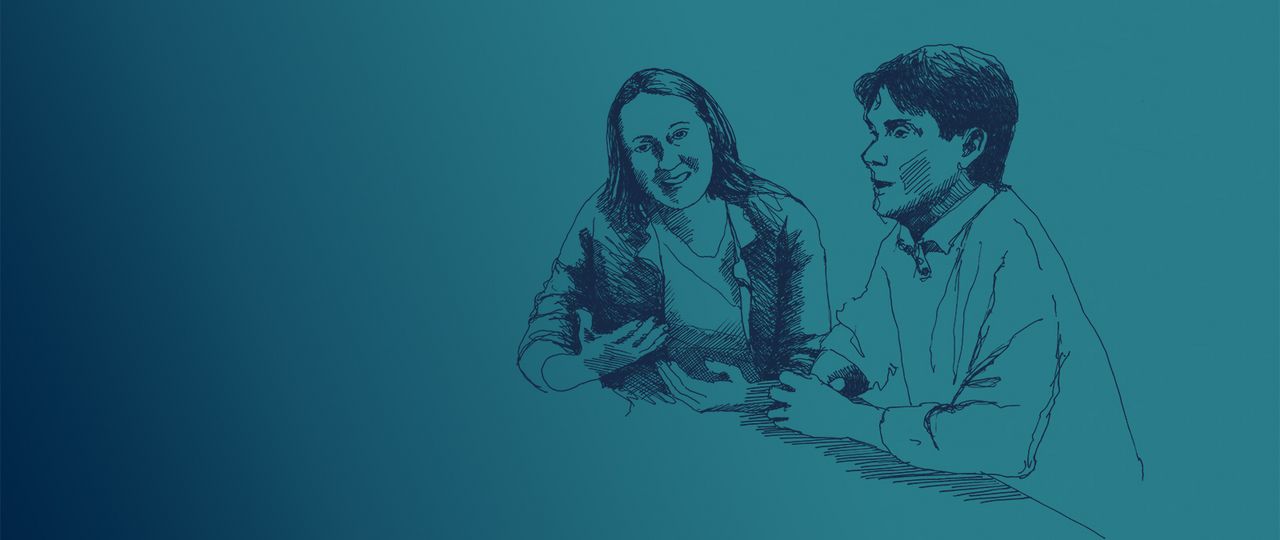
While multiple intertwined global crises are unfolding now or looming ahead, this moment in human history is also distinguished by unprecedented capabilities for probing, measuring, analyzing, and understanding our world – as well as for communicating the knowledge gained, and for sharing potential solutions.
The TUM-IAS Focus Group on Pollutants and Sustainability Governance examines cases of environmental pollution – centered on substances such as mercury, carbon, and pesticides – with an interdisciplinary approach that integrates public policy and social sciences with natural sciences and engineering. Addressing aspects of human activity that have offered benefits to society but are increasingly viewed as unsustainable, this research extends beyond case studies to the creation of broadly applicable frameworks for understanding and action.
To provide an inside look, the Institute for Advanced Study arranged a virtual interview in May 2021 with all members of the group: Hans Fischer Senior Fellows Prof. Henrik Selin of Boston University and Prof. Noelle Eckley Selin of the Massachusetts Institute of Technology, who during their time with the TUM-IAS co-authored the book Mercury Stories: Understanding Sustainability through a Volatile Element (MIT Press, 2020); their host Prof. Miranda Schreurs of the Bavarian School of Public Policy at TUM; and doctoral candidate Fiona Kinniburgh, who is jointly advised by all three. Science journalist Patrick Regan conducted the interview and edited it for clarity and length.
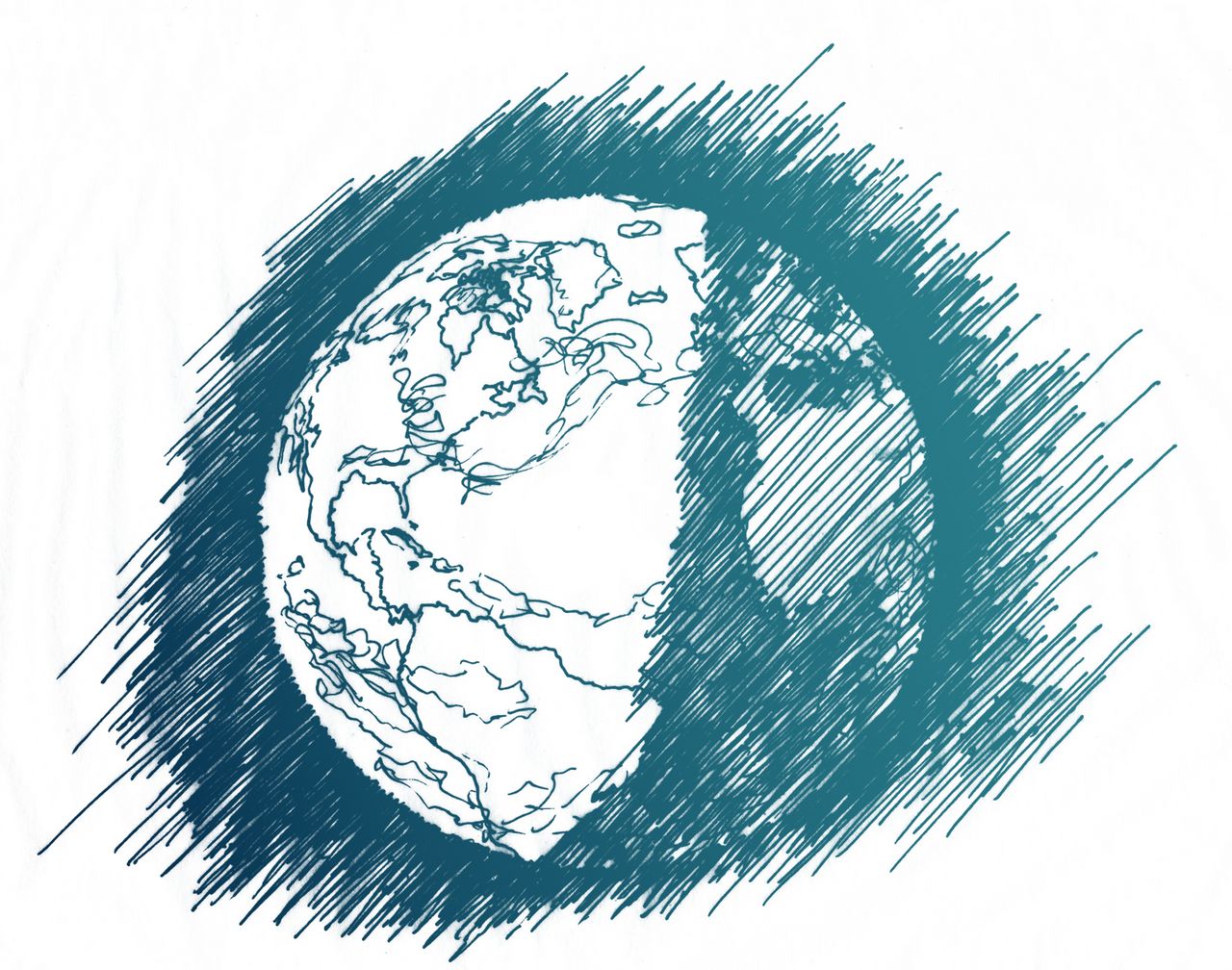
Q: It is not hard to see how your interests and approaches overlap, complement each other, and combine. But how did this collaboration come together?
Schreurs: I work on a range of issues dealing with both political and societal understanding of sustainability. A lot of my work is focused on climate change. The climate change issue is of course a very big issue, and very central in politics today. It's one that we're seeing addressed at the international level in climate negotiations, and at the national level in the form of energy transitions. And it's also an issue at the local level. For the university it's very important because of the role technology can play in addressing climate change.
The idea of working with Noelle and Henrik to explore these issues further was already there when the right opportunity arose. The TUM-IAS, with its interdisciplinary character and its interest in engaging with society, provided a perfect environment for our collaboration, with the added benefit of supporting Fiona's doctoral research.
Many years back, Henrik and I, together with another scholar, co-edited a book on trans-Atlantic environmental cooperation. That book was looking at both similarities and differences between the approaches across the Atlantic on environment and climate issues. I got to know Noelle as well at that time. And their work, which focuses on mercury, is indirectly tied to the other kinds of issues I work on. I spent many years living in Japan, and the entire mercury story that Noelle and Henrik have recently completed their book on begins in Japan. There are many points of connection for us in thinking about the links between technological development, chemical use, and environmental impacts.
Something that's common among the different issues we've been looking at, whether that's greenhouse gases and climate change or mercury pollution or ozone depletion, which Henrik and I worked on in the past, is that these are all global issues. And so they can't be solved by any one country alone. We really need global cooperation. Another commonality is that they all have to do with chemical processes or gases, and they have industrial connections. So change means it's going to have economic impacts.
It's a wonderfully complex problem that allows us, as social scientists, to think about how we can bring the different pieces together. How do we convince industry of a need to change? How do we convince policy makers of a need to change? Something that is super important is how science is presented to policy makers and to publics. What is the story that we're telling? How are we communicating these problems?
In their work on mercury, Henrik and Noelle have shown how this story telling played a critical role in slowly, over time, bringing about changes in understanding and overcoming industrial opposition – which you can understand, because industry had invested a lot in old processes. It's similar with climate change. How can we bring people to understand that something they've been doing for decades is a problem now? The only way to help people understand the need for change is to help them really understand what the science is saying. The environmental field is trying to figure out how we can take scientific and industrial questions, including the impact on society, and make them understandable to society.
“So change means it's going to have economic impacts.”
Prof. Miranda Schreurs
Q: Noelle, how would you describe the interplay between the natural and social sciences in your own approach to sustainability research?
N. Selin: My current work draws more from the natural science and engineering side, but my background is also very interdisciplinary. I did my PhD in earth and planetary sciences, focusing on atmospheric chemistry, modeling how hazardous substances like mercury travel through the atmosphere, where they're coming from, where they're going, what chemical reactions they undergo, and how to trace their pathways through the environment.
But my work is very policy-focused. I initially did a lot of research in the social sciences, thinking about the ways scientific information was used in policy processes. That shaped my approach to scientific research. You can't really understand what's happening in the atmosphere unless you fundamentally understand the influence of humans, and two-way interactions with human societies. And in this era of the Anthropocene, we increasingly need to take that into account when we're trying to understand the fundamentals of what's happening in the atmosphere. At MIT, I'm a faculty member in an interdisciplinary institute – the Institute for Data, Systems, and Society – and jointly appointed in Earth, Atmospheric, and Planetary Sciences. But I also run the Technology and Policy Program. That's our interdisciplinary two-year master's program, which is similar to the politics and technology program at TUM. There are related programs across the world that are master's programs focusing on the intersection of science, engineering, and public policy.
My research group takes an interdisciplinary perspective on a broad range of sustainability issues, especially those involving hazardous air pollution and their dangers to human health. Mercury is a key focus. My group does a lot of modeling, trying to trace policies all the way to impacts and responses: for mercury as well as ozone, particulate matter, and persistent organic pollutants.
Q: In many fields, researchers have had to develop appropriate ways to deal with gaps in data or reliability concerns. How do such issues affect your modeling work?
N. Selin: I have collaborations with a lot of groups that collect data on mercury and other substances in the atmosphere and in other media. One of the challenges with mercury is that the data are sparse. There are few places in the world where data has been collected, and those are mostly in the northern hemisphere, mostly in developed countries. To help to understand where mercury is traveling and what kinds of processes it undergoes, we go back and forth between the data and the modeling to test hypotheses and generate insights. The data question is also where this intersects with the policy world. Where and when would you collect more data on mercury? Both Henrik and I have worked with the global treaty on mercury, the Minamata Convention, in the context of their process for effectiveness evaluation.
Some questions come up there: Where should mercury be measured? Who will pay for such measurements? Countries are of course interested in having measurements in their own territories and close to the outputs that are most meaningful for them. Those might not be the most optimal measurements from a scientific perspective to constrain some of the processes and scientific understandings of mercury. So there is a necessary interplay between the scientific research and the policy process to really understand where new data can come in, and how to use that both in scientific research and in policy assessments.
In my group, as we do model analyses and actually look at the science and engineering of mercury and related issues, we really try to involve stakeholders and policy considerations in the framing and throughout the research process. So for example we'll be talking to regulators – in the US context, that tends to be state and national regulators – but also non-governmental organizations that have an interest in the research. And that has changed some of the framing of the questions we've asked and the data sources we've used, in order to increase their trust in that process and make the product more usable at the end of the day.
H. Selin: In our book Mercury Stories, Noelle and I take a systems approach to studying mercury and understanding it as a sustainability issue, but then also using that systems framework to think about leverages. If you want to push a system from a less sustainable to a more sustainable state, what are the different levers you can pull? And then to think about what happens if you pull lever A. If you pull lever B, what happens? If you pull lever C? And you can then use that to think about which reverberates most throughout the system. Where do you get the most bang for the buck? If you can only pull one lever, which one should you pull?
Q: And when? Is timing an important factor?
H. Selin: Right. When do you need to take what action? A lot of that is to do with thinking about tradeoffs of different policy options. Most policy options come with tradeoffs. And also how different policies intersect. That is something that Fiona has also done in her work, looking at how international treaties – where global governments come together and write international law – intersect with private sector certification schemes. In an ideal world, they should be complementary, but in the real world they might not be. Fiona can talk more about that. But that's one of the things we've been doing.
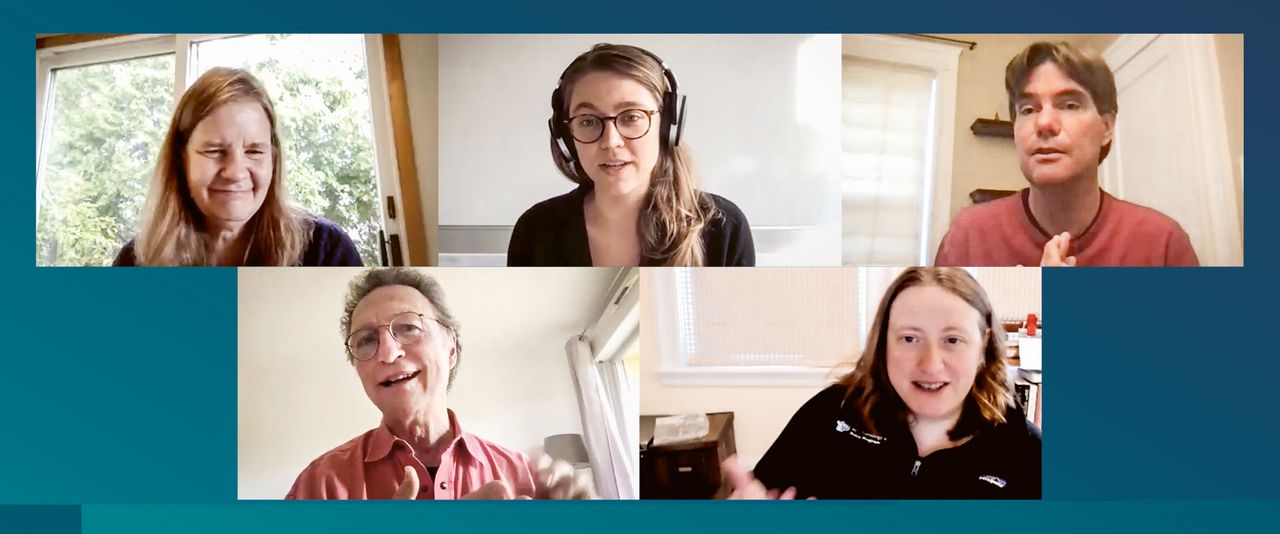
Q: What brought you to this field of research, Fiona? And what is your vantage point on the interactions between science and society, between public policy and private enterprise?
Kinniburgh: I started out doing my undergraduate work in biology. I've always been very interested in the scientific side. But through my interest in the environment I came to understand that social science is now a key factor in driving the process. My focus now is on international politics – I have a lot of overlap on that with Henrik and Noelle and Miranda – and also on the use of social science in the policy process. My background too is in climate change, but I have also done a lot of work on biodiversity and agriculture as well. So bringing all those things together is a nice point of contact where chemicals are in the middle of all these issue areas at the same time.
Through the TUM-IAS, I had the opportunity to spend some time at Boston University and MIT last year, which was really special. On top of the work we're doing, our actual collaboration, I think the fact that we have these international perspectives is extremely useful – first because we've all worked on international policy issues, and also because Miranda is a comparative scholar, and that's where my work is now going as well. My current focus is looking at France and Germany from a comparative perspective.
In many ways we have very different empirical cases. That really adds to the richness of the group, because we find we have pretty similar themes that all deal with the complexities of the systems that we are trying to analyze and then bring some insights to. The connection with policy is critical. We know that these are very important issues with real-world implications. The types of things we're thinking about might actually impact some decisions. That makes it both challenging and very exciting.
Q: Henrik and Noelle, where does your book about mercury come in? Do you think insights from your studies of mercury might aid in understanding and dealing with other sustainability issues?
H. Selin: In the book we use the adoption of the global Minamata Convention on Mercury as a sort of a frame. The first story of the book is related to that. And as part of our research, both Noelle and I attended many of the negotiations on site. We were also in Minamata when the convention was adopted in 2013. One of the reasons we found it interesting to use mercury as a case study of sustainability is that people have interacted with mercury and mercury compounds for thousands of years.
There's a very long history to draw from, going back to the earliest use of cinnabar. You mine cinnabar, and then you extract mercury from cinnabar. Noelle has a piece of cinnabar behind her. So do I. It's basically a red rock. But this is also cinnabar red. It was being used in coloring and in ancient medicines for thousands of years. And then mercury began to be more actively used around the 1400s and 1500s in Europe. It was used to make mirrors, and then it was used to make hats, and of course they invented the mercury thermometer – that's probably what most people associate mercury with. For about 300 years, it was the dominating technology for measuring temperature, by far the most accurate one.
And then a lot more industrial uses emerged in the 1800s. Mercury became an integral component in chemicals manufacturing. There was continued use in medicines, for hundreds of years. It was used to try to treat syphilis. That didn't go very well. So there's a very long history of both useful interactions with mercury and really bad ones. And along that side you also have active mining of mercury, which was often a very deadly activity. One of the things we talk about in the book is how human well-being has been advanced by mercury. The mercury thermometer is a practical example of that. But then on the flip side, interaction with mercury has also been deadly. An example is the tragedy in Minamata that Miranda mentioned. We tried to unpack the ways in which humans have interacted with mercury, ways it has advanced human well-being, and ways it has severely harmed human well-being. And we tried to do that using the system framework.
N. Selin: A lot of people think about environmental pollution stories as a fairly common narrative. You have a discovery of something, it's found to be harmful, and it's then phased out. There's an arc to it. And one of the surprising things the mercury story shows us is that the history is much more complex than that. This becomes clear once you start thinking about who benefits and who is harmed and how that changes over time, the development of knowledge, the different impacts of institutions along the way, different times at which different uses were thought to be hazardous, to whom and why. Another complicating factor is that mercury has diffused across borders both through trade and through environmental transport.
This is a major insight of our book, that a sustainability challenge can't be fully solved by just saying, for example, let’s get rid of mercury. It's an element in the periodic table. And people have been interacting with it in ways that will linger for generations and millennia. Once mercury is released to the atmosphere or into the environment, it continues to circulate. It travels globally. Mercury can be in the air. Most people are familiar with the silvery liquid form, which I have in a small container here. But it goes into the gas phase. It becomes a gas as elemental mercury. And it can travel worldwide. Then it deposits to ecosystems and builds up as methyl mercury, which was the very toxic form in Minamata, Japan, that caused all the poisoning incidents.
“My group does a lot of modeling, trying to trace policies all the way to impacts and responses: for mercury as well as ozone, particulate matter, and persistent organic pollutants”
Prof. Noelle Eckley Selin
Q: It accumulated in the bodies of fish?
N. Selin: Yes. Mercury can build up along food chains in fish. People across the world are exposed to levels of methyl mercury in fish that could result from pollution that's happening today, but also could result from pollution that was happening a few hundred years ago. Mercury continues to circulate in the environment and poses a longer-term challenge. We also found in researching our book that while telling the story of mercury from a scientific perspective would illuminate a lot about environmental transport, the social perspective was important too.
One of the key uses of mercury in the 1500s was in silver mining in the Americas. That mercury came from Europe and was transported over to the Americas. There it was used in silver mining and had very negative consequences for the miners, who had severe health problems, often fatal health issues, because of mercury exposure. But that mercury also could continue to circulate. Today, it could be in South America, but it could also have traveled worldwide. It's a topic of some scientific uncertainty what the legacy of that mercury was, how far it spread globally, but understanding where that mercury came from and ended up really required us to understand the social and societal transport of mercury along with and alongside the environmental transport of mercury. And also how it was perceived over time. It was gaining value for colonial powers and at the same time was really detrimental to indigenous workers.
We see this pattern, unfortunately, echoed as well with the current uses of mercury in artisanal and small-scale gold mining. Henrik and I have a project, along with a colleague at the University of Wisconsin, looking at the continuing use of mercury. This project, funded by the US National Science Foundation, was really a spinoff of the work we did in the book, applying our framework to a specific case study in a region that has a lot of gold mining and a lot of societal problems.
H. Selin: Historically, two of the largest mercury mines in the world have been in Europe. There is Almadén in Spain, which has been in use for about two thousand years at least, and Idrija in what is now Slovenia, which has been used for five or six hundred years. Recently both of them jointly became UNESCO world heritage sites – another way of showing the transition there. We have visited both of them. We've been down in both mines. The nearest large city to Almadén is Seville. If you go to the large cathedral there in Seville, you will see that a lot of the most valuable objects are not made of gold. Typically when you go into a large cathedral, there is a lot of gold. Here there's the silver. They took the mercury to Latin America, they extracted the silver, and then it was brought back home. So it's a cathedral that is much more covered in silver than in gold, and that is directly related to the mercury that came from a few miles up the road.

N. Selin: We have a chapter that looks at the current challenge of artisanal and small-scale gold mining. We have a chapter that looks at the global cycling of mercury, which gets into some of these issues of transport by air versus transport by ship. But we haven't yet talked about what is potentially the second largest atmospheric source of mercury, and that is coal burning. Mercury is a contaminant in coal, and when coal is burned, it's released to the atmosphere, and a lot of the current industrial mercury pollution is a result of the rapid increase in coal burning. You have a real clear link to climate change in the industrialization that comes out of the mercury case as well.
One of the other things we do in our book is to break down the key findings for different audiences. In the final chapter we draw some lessons for researchers, people who are studying mercury, as well as decision makers, the policy audience, and also concerned citizens. The lessons are a little bit different for all of those audiences in terms of their understanding, their ability to act, their potential leverage points. So we really try to identify that separately and think about what their interests are and how they can help move toward a more sustainable trajectory.
Q: So you're tuning the output for people who might have different interests and different capabilities for action. Could you explain a bit more about what you mean, in this context, when you talk about a systems approach?
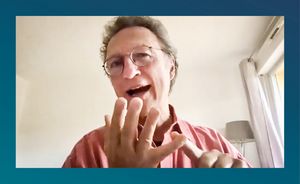
H. Selin: Yes. We are basically setting up a new framework that we call the human-technical-environmental framework, the HTE framework. We're identifying technical components – that could be a coal-fired power plant, or it could be a scrubber that you put in a coal-fired power plant to catch the mercury before it goes into the atmosphere. It involves humans. This could be fishers in Minamata, it could be factory workers, or it could be factory owners. And then there are also environmental components – it could be a small ecosystem, it could be the ocean, it could be the fish. And we're looking at how these three material components – the technology, the humans, and the environment – interact in the context of institutions and knowledge. That's the overall framework.
Through this framework, we are then tying in a matrix-based approach – we think this is one of the major contributions – so there is also basically a roadmap for using and applying the systems framework, which can then be done through a matrix. This is somewhat common in engineering systems but less common in the natural sciences or in the social sciences. So we try to combine insights from the natural sciences and the social sciences and engineering in creating both the analytical framework – the HTE framework – and then also the methods and tools needed for actually applying that framework.
N. Selin: One of the challenges that we encounter in addressing sustainability challenges is the difficulty of trying to break them down and trying to understand them. At first glance, it seems like a really complicated problem, and those in natural sciences and engineering often say: How can I take into account these institutional aspects, and the idea that there's politics involved in this issue? And for the social scientists, there are some physical flows and technologies that have maxima and minima that might not be amenable to the kind of analysis that's traditionally done in their fields.
What we're trying to do is give researchers who have backgrounds in various different domains a common way to talk about these issues and not exclude any of the really critical components. One of the conclusions from looking at these mercury cases across the book was that describing a system and omitting any set of components – whether they be human, technical, environmental, institutional, or knowledge components – wouldn't be a full description of the system. At the same time, then, we're giving you a roadmap to connect some of the analytical ways you would start to break down the problem, looking at how these components interact. And then from a forward-looking perspective, identifying leverage points, highlighting interventions in the systems that can bring about change. It's a four-step process. The first step is categorizing those components, the second is looking at interactions, the third is looking at interventions, and then the fourth is drawing broader insights into the system.
Q: International treaties must represent some of the more complicated interventions to enact and to evaluate. Are there practical lessons that can be drawn from studying existing treaties? Are there any general insights that might streamline efforts to fo
Schreurs: There are parallels between various global environmental agreements. One is just that: They are trying to bring about change globally. And that's important so that you don't have leakage, with industry running off to countries that don't have the same environmental standards. But there are crucial differences as well.
H. Selin: A number of global environmental treaties exist in parallel, but each is also unique and deals with unique issues. The climate change issue is very different from ozone depletion, for instance, in terms of how carbon behaves in the environment compared to the ozone-depleting chemicals, the industries that are involved, the economic interests, and so forth. So just because that one institutional model worked relatively well on ozone depletion – it is often seen as one of the more successful global environmental agreements – that doesn't mean we could solve climate change by copying that approach. One can definitely look at different treaties and try to draw insights and lessons. That's very helpful. But I think one should be really careful about thinking one is a blueprint for another area.
N. Selin: There is also a substantial area of research that links back to Fiona's work on the intersections among these different treaties. Fiona's work looks at the chemicals treaties in particular, also the strong connections they have to the biodiversity convention, as well as to climate change – and the intersections between those issues and how they're dealt with institutionally where you have clear scientific and systems issues that cross those different agreements. You see this, for example, in the cases of mercury and climate change, since both deal with coal in a very substantial way. You have to look at how, institutionally, each agreement carves out its own way of dealing with the problem – in some cases that might be the same countries committing to two very different things. So there might be competition, there might be synergies, there might be interactions. Trying to figure out how all of those things work together in order to move us toward sustainability is a goal of a lot of our work.
Q: Fiona, could you explain more about the current state of things, and the outlook for the future, at the points where biodiversity concerns intersect with the business and practices of the chemical and agricultural industries?
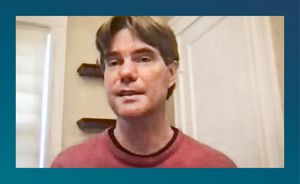
Kinniburgh: Sure, absolutely. I think Noelle introduced it really well. We've had so many international environmental agreements, and for good reason. But there are also historical factors that led to their development over time, often dealing with issues that are very different but do overlap. We know that climate change is a huge problem, and the science on that has been developed and reinforced by the IPCC (the Intergovernmental Panel on Climate Change), but the biodiversity crisis is something that has grown in importance on the international agenda much more recently. We now also have a scientific body for biodiversity, called IPBES (the Intergovernmental Platform on Biodiversity and Ecosystem Services), that aims to do essentially what the IPCC does: provide scientific knowledge showing us what the state of the problem is. At the same time, on the chemical side, we also have a lot of science showing us that the amount of chemicals we are using and constantly developing is growing unsustainable. Unfortunately there is no science-policy body there yet, though that might be something to come in the future. This is something Henrik has also written about.
So to a certain extent on the scientific side we know that there are a lot of overlapping issues. When it comes to institutions, we're not necessarily equipped to handle these things together. So that's where my work on agriculture comes in. The approach is to say yes, we know what a lot of the environmental and sometimes social problems are. Maybe we also need to focus on sectors. So, for example, focusing on agriculture as a sector then allows us to zoom in on those institutions and actors that can drive change, which are of course impacting the environment but have their own interests, their own place in national economies and the international economy. From a political perspective, this enables us to look at what's going on in a way that an entry point purely from the environmental side doesn't always allow. For agriculture specifically – even on pesticides, which I work on – we have this issue where substitution is not always an obvious answer. Even between one pesticide and another, you actually have to consider different solutions, different scales, and different contexts.
I think what all of our work shows in the end is that the systems perspective is critical. You have to link the scientific side, the material side, and the institutions. But what the science in all of the domains tells us is that, as a whole society, we need to transform our economies. So our question then is: What does that look like? What kinds of knowledge can we use to inform the decisions we need to make?
“… no country alone can address the sustainability crisis…”
Prof. Henrik Selin
Q: And how do you see these gears meshing – scientific understanding, public communication, governmental policy, international law and cooperation? Does what you've learned make you optimistic that human civilization can or will be put on a more sustainab
Schreurs: A lot of the progress we have seen came from interactions, and little steps that eventually added up. So that you saw a lot of different institutions acting, you saw for example a lot of regional efforts to start putting into place some models, some increasing knowledge, with separate efforts feeding into each other. We've seen the magnitude of changes add up over time and really make people's lives better. But there wasn't one magic way that that happened.
H. Selin: I can build on that. Looking at governance and the global environmental agreements, I think that they are very useful for bringing countries together, setting common goals, common rules, common standards. As Miranda said, no country alone can address the sustainability crisis, including the environmental component of that. We definitely need global cooperation. I'm also the first one to acknowledge that these global treaties are limited. Global cooperation and global treaties themselves will not solve the sustainability crisis. That's where we're getting into, especially in Europe, regional cooperation under the European Union, or national action, or even local action. This then is where I see the global level setting the common standards, and then countries need to figure out what works for them. The approach in the United States might not work in Canada, which might not work in Germany, which might not work in Brazil. Each country needs to be figuring out their own way.

Schreurs: I think what we see across these different issues we're looking at is the crisis of an industrial structure that was focused on economic growth but not on long-term well-being, whether planetary or human. And that has led to really serious problems in all these areas we're looking at, whether it's mercury pollution and human health problems or agricultural pesticides and their ecological and human impacts, or greenhouse gases and climate change. And what we're seeing across all these areas is growing pressure for change. Steam is in the pot, and the pot's about to explode. So I think we're hitting the point where we'll start to see bigger, deeper changes in industrial policy and technology policies because of these growing pressures.
Notice what just happened in Germany, with the constitutional court's decision that Germany is not doing enough on climate change to protect future generations. The court basically told the government: 2050 is too late. This kind of decision came a few years ago from the Dutch courts, to say the social movements that are demanding more action from the government are justified. And now we see what's going on with the pressures in the United States on the Biden administration to take climate change more seriously – and not just climate change. The message behind the Green New Deal and the European Green Deal is that we need a new structure. We need to rethink our economies. And that's what I'm hoping is happening, that all of these pressures are really indicating it's time for a big change.
Kinniburgh: Many times across these different issue areas, what we've seen in a lot of cases is development that has been for human well-being or has contributed to economic growth, and now we're understanding that maybe human well-being for a majority of the people on the planet has to look somewhat different. This inertia has been building up, especially since the 1950s but even for centuries. The way we've developed as a society is not possible in the same way any more. What that also means is that there's a lot of inertia in the system, so there will need to be a lot of, let's say, energy in the other direction to really motivate change.
I think it's also really exciting, especially for a lot of the younger people pushing for change, to think: Well, we need to imagine something completely different moving forward. And that's why the work that we're all doing ties into these bigger policy questions, such as what could a Green (New) Deal look like? What does this new overall project for society mean for human well-being, for sustainability, for the environment, and for society?